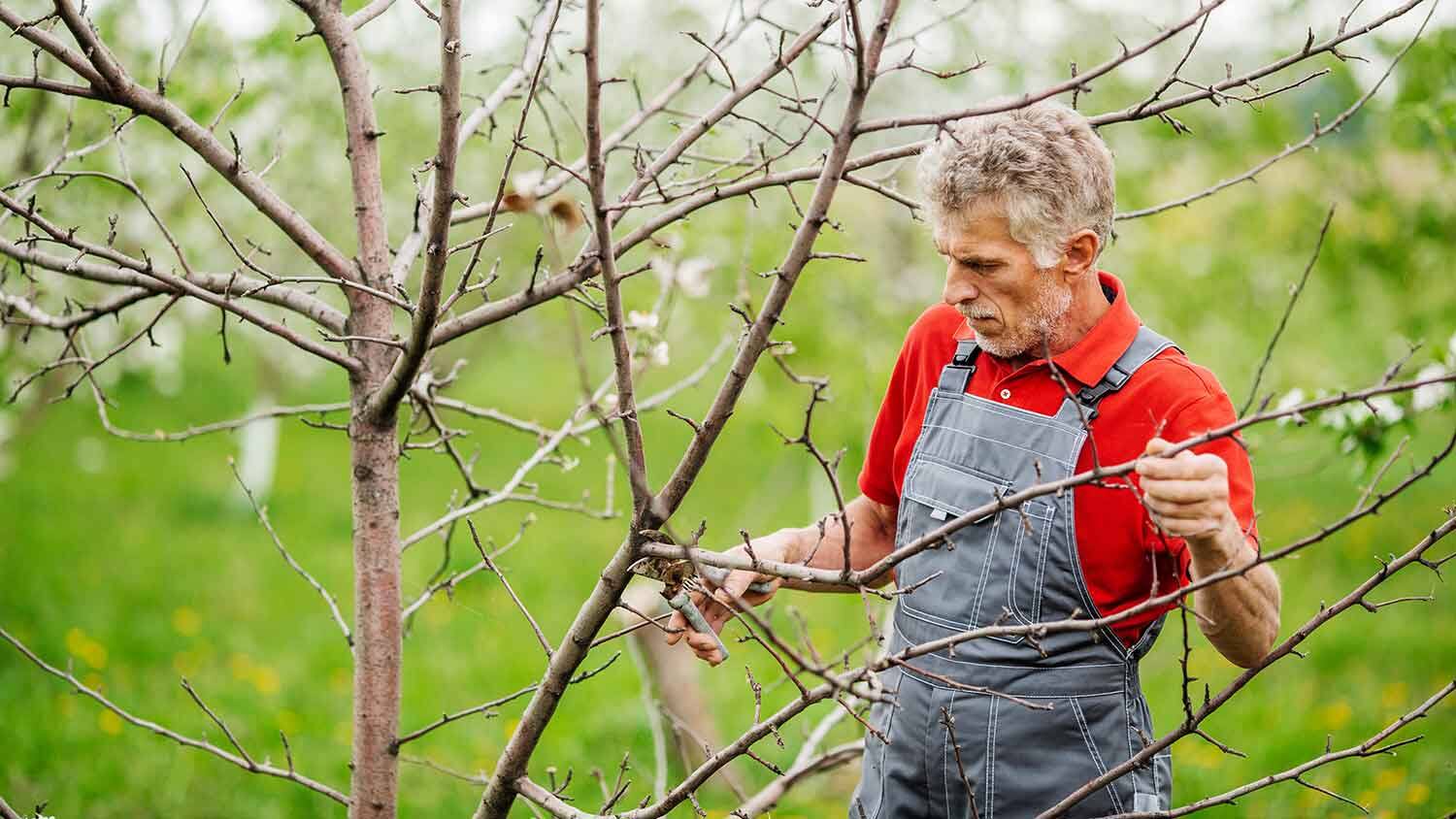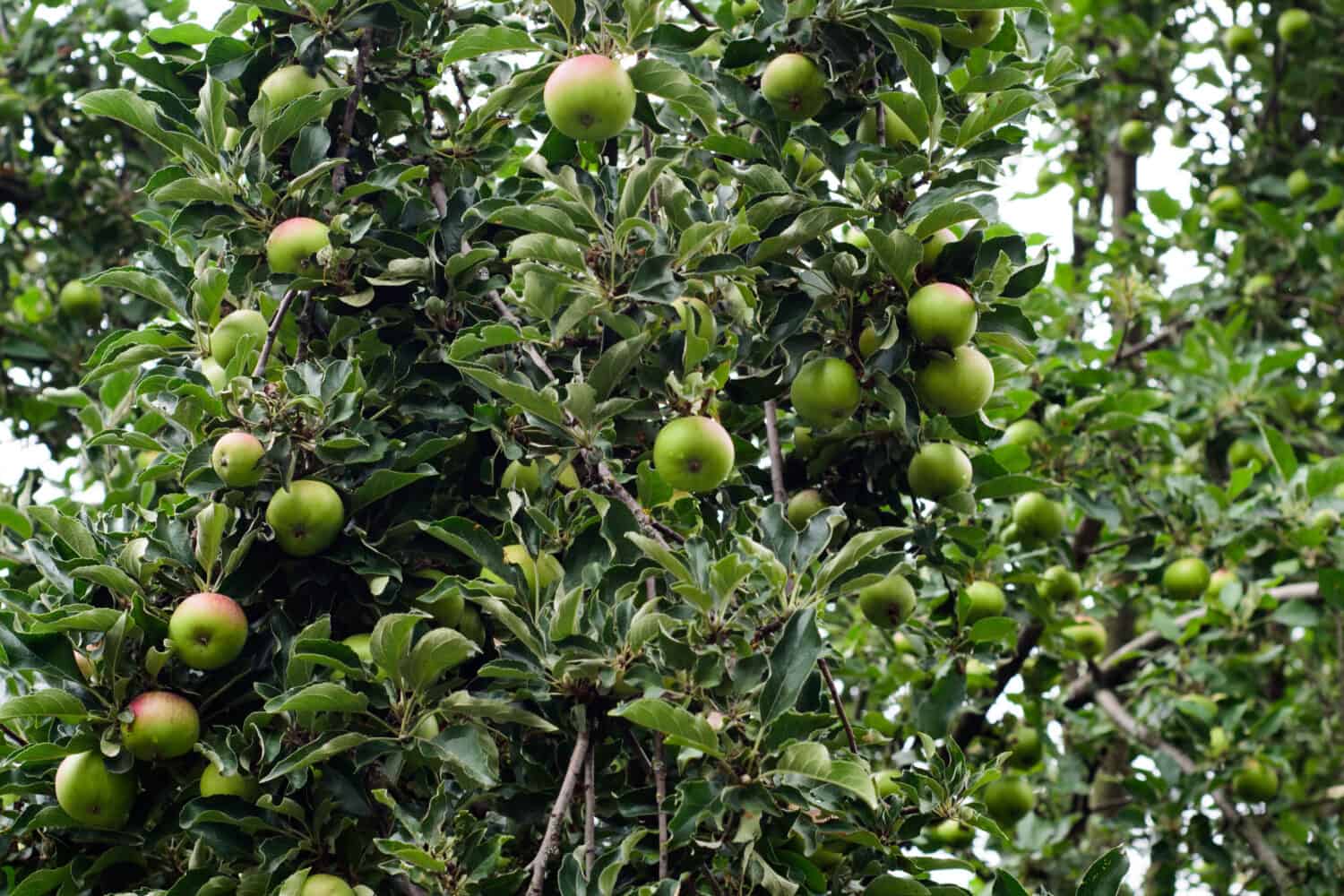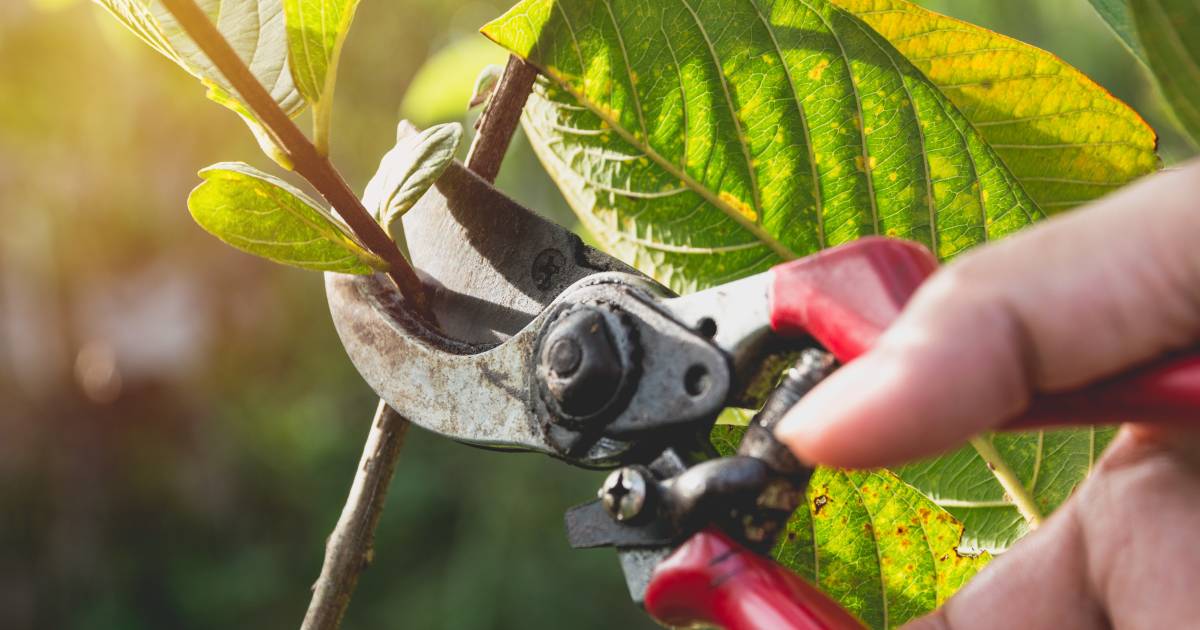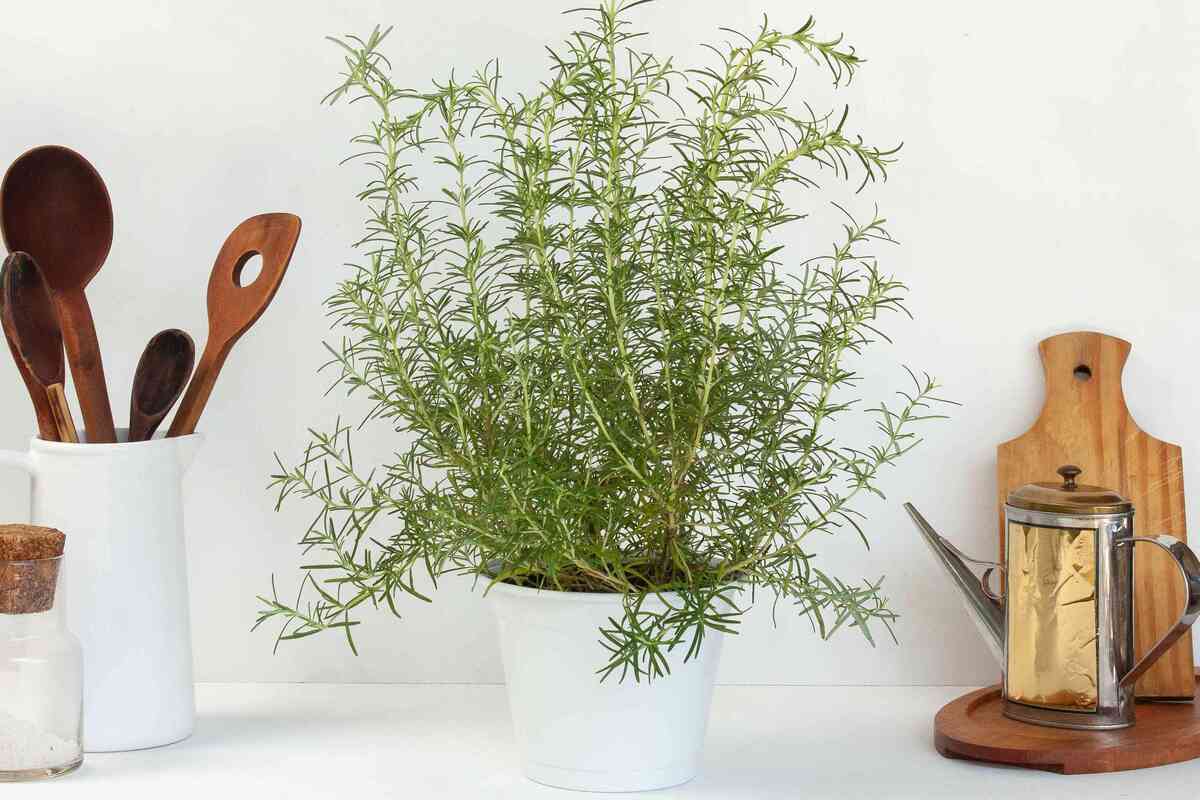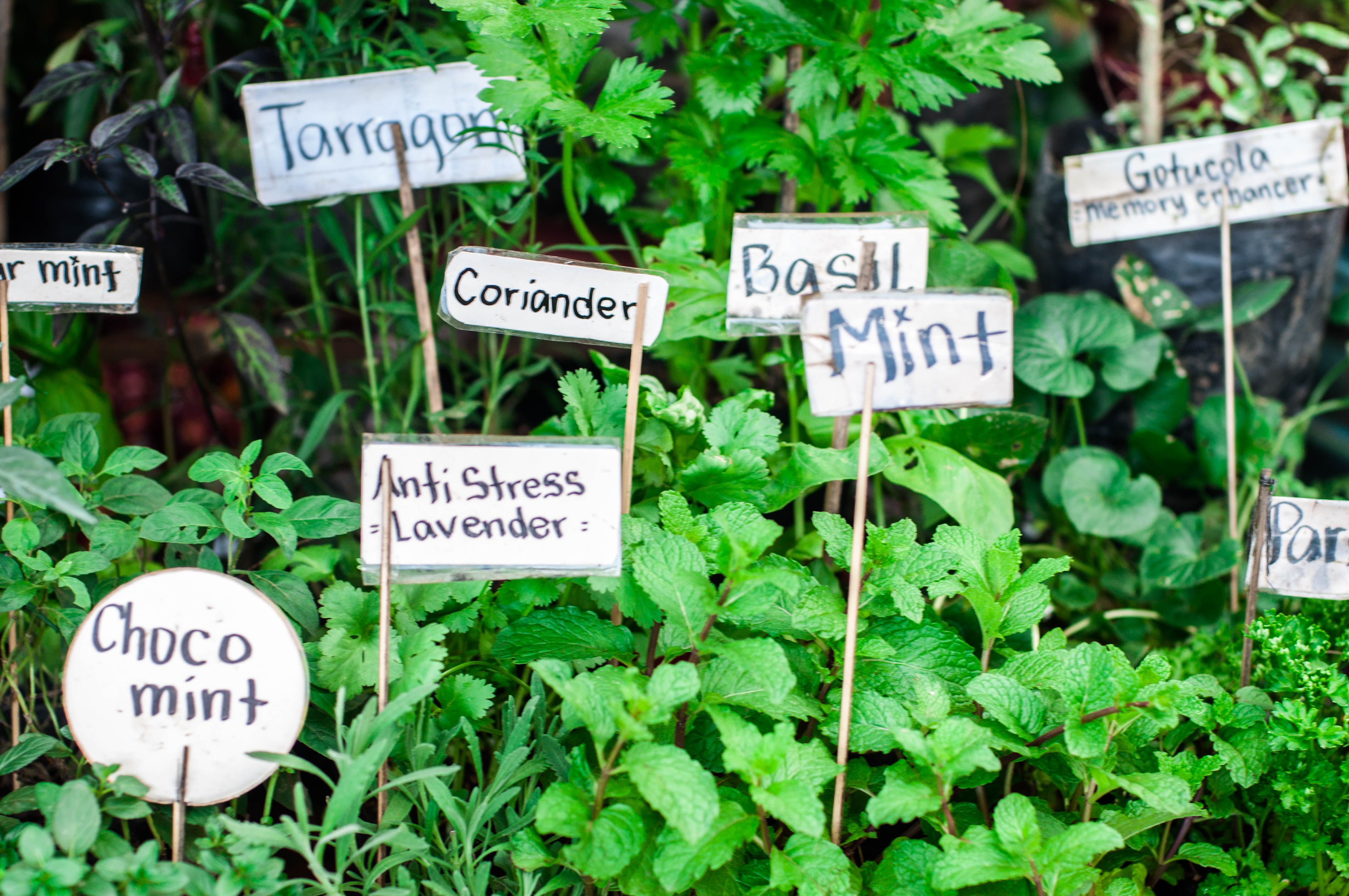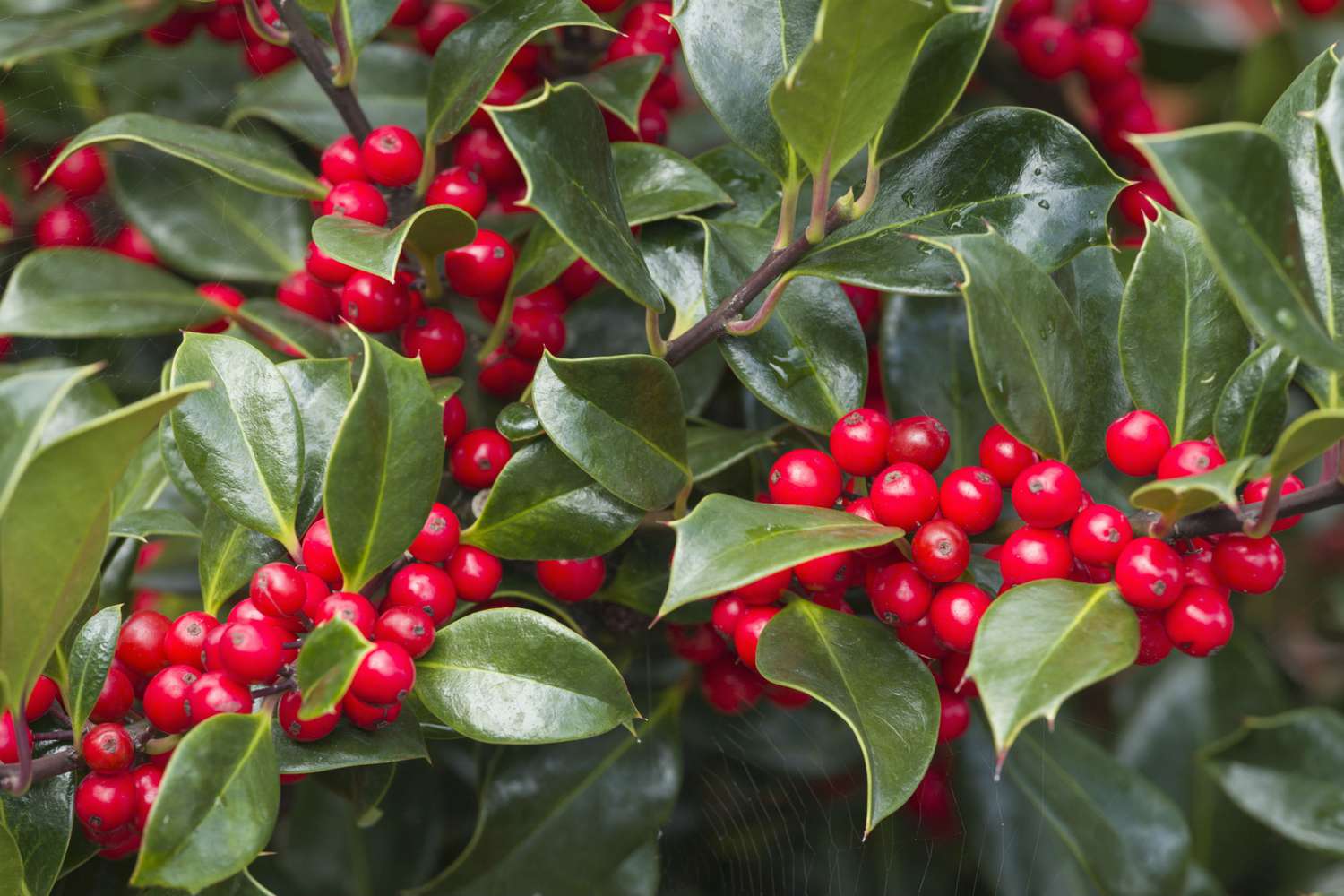Home>Gardening Techniques>Plant Care>When Do You Spray Fruit Trees
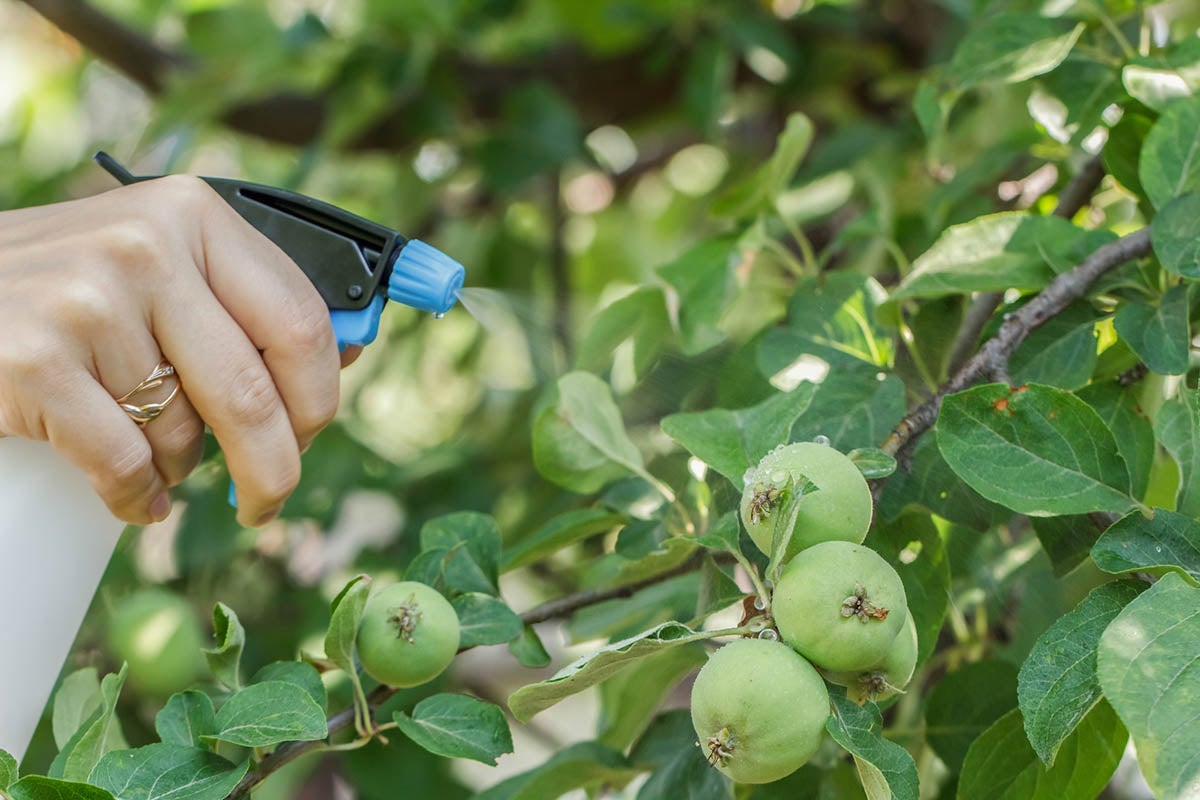

Plant Care
When Do You Spray Fruit Trees
Published: November 3, 2023
Learn when to properly spray fruit trees for optimal plant care. Discover the best timing and techniques for effective spraying to ensure healthy and bountiful fruit harvests.
(Many of the links in this article redirect to a specific reviewed product. Your purchase of these products through affiliate links helps to generate commission for Chicagolandgardening.com, at no extra cost. Learn more)
Table of Contents
Introduction
Growing fruit trees can be a rewarding experience, but it also requires careful attention to plant care. One crucial aspect of maintaining healthy fruit trees is implementing an effective spraying regimen. Spraying fruit trees helps combat pests and diseases, ensuring the trees can thrive and bear delicious, bountiful fruit.
However, knowing when to spray your fruit trees can be a challenge. Timing is crucial to maximize the effectiveness of the sprays while minimizing any potential harm to the trees or the environment. In this article, we will explore the factors to consider before spraying fruit trees and delve into the ideal times for spraying throughout the year.
Before we discuss the timing for fruit tree spraying, it’s crucial to understand the factors that can influence your decision. These factors include the type of fruit tree, the region you’re located in, the prevailing weather conditions, and the specific pests or diseases that commonly affect fruit trees in your area. Evaluating these factors will help you develop a tailored spraying schedule that suits your specific circumstances.
It’s worth noting that prevention is often more effective than treatment when it comes to pests and diseases. Regularly inspecting your trees for signs of trouble, practicing good orchard hygiene, and implementing cultural practices can go a long way in minimizing the need for sprays. However, spraying is still necessary in many instances to protect the trees and promote their overall health.
Understanding the ideal times for spraying fruit trees is crucial to ensure the sprays are effective and don’t harm beneficial insects or the tree itself. In the following sections, we will look at the recommended times for spraying fruit trees throughout the year, starting with early spring.
Factors to Consider Before Spraying Fruit Trees
Before you start spraying your fruit trees, there are several important factors to consider. These factors will help you determine the appropriate sprays to use and the timing for application. By carefully evaluating these factors, you can ensure that your spraying efforts are effective and environmentally friendly.
The first factor to consider is the type of fruit tree you are dealing with. Different fruit tree species have varying susceptibilities to pests and diseases. Understanding the specific vulnerabilities of your fruit tree will guide you in selecting the most appropriate sprays.
Next, you need to consider your location and the climatic conditions. Different regions have different pest and disease pressures. Familiarize yourself with the common issues in your area, as well as the local climate. For example, in warmer regions, certain pests and diseases may be more prevalent, requiring specific sprays and timing.
The current weather conditions also play a significant role in spraying fruit trees. Avoid spraying during rainy or windy periods, as it can reduce the effectiveness of the sprays and lead to wastage. Optimal spraying conditions are typically calm, dry days with temperatures above freezing.
It’s essential to identify the specific pests and diseases that commonly affect fruit trees in your area. By monitoring your trees and staying informed about local pest and disease trends, you can take proactive measures. Regular inspection allows you to detect problems early on and intervene with targeted sprays.
Consider the life cycle of pests and diseases as well. Some pests lay eggs at specific times, while certain diseases are more prevalent during certain stages of tree development. Timing your sprays in accordance with these life cycles improves the efficacy of the treatments.
Lastly, be mindful of the health and age of your fruit trees. Young trees are generally more susceptible to pests and diseases and may require more frequent spraying. Conversely, healthy, established trees may need minimal intervention unless a particular issue arises.
By taking into account these factors, you can make informed decisions about when and what to spray on your fruit trees. This thoughtful approach maximizes the effectiveness of the sprays, minimizes environmental impact, and promotes the overall health and productivity of your fruit trees.
The Ideal Time to Spray Fruit Trees
Timing is crucial when it comes to spraying fruit trees. The ideal time for spraying varies depending on the specific needs of your trees and the pests and diseases you are targeting. Understanding the different stages of tree growth and the corresponding pests or diseases will help you determine the optimal timing for your sprays.
Early spring is one of the key times for spraying fruit trees. As the trees emerge from dormancy, it is crucial to apply dormant oil sprays to smother overwintering pests such as scale insects and mites. This early intervention helps control these pests before their populations explode and cause damage to the tree.
During mid-spring, when the buds start to swell but before they fully open, it is essential to apply a spray to target fungal diseases such as apple scab or peach leaf curl. Fungal spores can overwinter on tree bark or in fallen leaves, and treating the trees at this stage can prevent infections as they enter the active growing season.
Late spring is another critical time for spraying fruit trees. This is when the trees are in full bloom, and pollinators like bees are actively visiting the flowers. It is crucial to avoid spraying during this stage to protect the pollinators and prevent any harm to beneficial insects. However, if specific pests or diseases are a concern, you can use targeted sprays that are safe for pollinators, or consider alternate methods such as traps or pheromone dispensers.
Summer spraying is typically aimed at managing pests that attack the foliage or fruit. This can include pests like aphids, caterpillars, or fruit flies. Regular monitoring of the trees will help you identify pest populations and take appropriate action. Spraying during cooler parts of the day, such as early morning or late afternoon, can reduce the impact on beneficial insects that are more active during warmer hours.
In the fall, after harvesting the fruit, it is important to conduct another round of spraying. This helps control pests that may still be present on the trees, as well as prevent diseases from overwintering on the tree or fallen debris. Applying a dormant oil spray during this time can further protect the trees during the winter months.
Remember that the ideal time to spray fruit trees may vary based on your specific region, weather conditions, and the types of pests and diseases you are dealing with. It is crucial to monitor your trees regularly and make adjustments to your spraying schedule as needed.
By understanding the ideal times to spray fruit trees and tailoring your efforts to the specific needs of your trees, you can effectively manage pests and diseases while promoting the health and productivity of your fruit trees.
Early Spring Spraying
Early spring is a critical time for spraying fruit trees. As the trees emerge from their winter dormancy, it is crucial to initiate proactive measures to control pests and diseases before they become a problem. Early spring spraying helps to prevent infestations and maintains the overall health of the trees.
One of the key sprays to apply during early spring is a dormant oil spray. Dormant oil sprays are highly effective in smothering overwintering pests such as scale insects and mites. As the name suggests, these sprays are applied during the dormant period when the trees have yet to start actively growing. It is important to spray before the buds begin to open.
Dormant oil sprays work by coating the pests with an oil substance, suffocating them and preventing them from causing damage to the tree. This early intervention helps to keep pest populations under control before they have a chance to multiply and infest the new growth.
When applying dormant oil sprays, it is important to thoroughly coat all parts of the tree, including the branches, trunk, and any visible buds. This ensures that you reach hidden pest populations and minimize the chances of infestations in the coming growing season.
It is recommended to use a horticultural or dormant oil specifically formulated for fruit trees. These oils are safe to use and effectively control pests without harming the trees or the environment. Follow the instructions on the label regarding application rates and timing for optimal results.
Aside from dormant oil sprays, early spring is also a good time to inspect your fruit trees for any signs of pest or disease issues. Look for evidence of insect activity, such as egg masses, immature pests, or visible damage on the bark or leaves. Early detection allows you to take appropriate action and implement targeted sprays if necessary.
Additionally, early spring is an opportune time to assess the overall health and vigor of your fruit trees. Look for any signs of stress, such as nutrient deficiencies, weak growth, or signs of disease. Address any issues promptly through appropriate fertilization, pruning, or disease management practices.
Remember that the timing of early spring spraying may vary depending on your specific location and the prevailing weather conditions. It is best to consult local extension services or trusted gardening resources to determine the optimal time for spraying in your area.
By conducting early spring spraying and taking proactive measures to control pests and diseases, you set the stage for a successful growing season, ensuring healthy, thriving fruit trees and bountiful harvests.
Mid-Spring Spraying
Mid-spring is a critical period for fruit tree care and spraying. During this time, the buds begin to swell, signaling the start of active growth. It is essential to apply targeted sprays during mid-spring to prevent the onset of fungal diseases and protect the trees as they enter the growing season.
One of the primary concerns during mid-spring is fungal diseases. Diseases such as apple scab, peach leaf curl, and brown rot are common issues that can affect fruit trees. These diseases can significantly impact fruit quality and overall tree health if left unchecked.
To combat fungal diseases, it is important to apply a fungicidal spray during mid-spring, just before the buds fully open. The timing is crucial because it allows the protective spray to form a barrier on the buds and emerging leaves, shielding them from potential infections.
Selecting the appropriate fungicide depends on the specific diseases prevalent in your area. Consult with local experts or extension services to identify the most effective fungicides and their application rates. Follow the recommended guidelines to ensure safe and effective use.
When applying fungicidal sprays, it is important to thoroughly cover the branches, buds, and emerging leaves. Be mindful of any developing flowers, as some fungicides may be harmful to pollinators. In such cases, consider using fungicides that are specifically labeled as safe for bees and other beneficial insects.
In addition to fungal diseases, mid-spring is also a good time to be vigilant for early signs of insect pests. Some pests, such as aphids and caterpillars, may start to become active during this period. Regularly inspect your trees for any signs of pest activity, such as distorted leaves, sticky honeydew residue, or the presence of insects themselves.
If pest populations are low, you may choose to take a wait-and-see approach, as natural predators and beneficial insects may help keep pest numbers in check. However, if infestations appear to be significant, consider using targeted insecticidal sprays to prevent the pests from causing extensive damage.
Monitoring and maintaining good orchard hygiene practices, such as removing fallen leaves and debris, can also contribute to preventing the spread of diseases and reducing the pest population.
By conducting mid-spring spraying and implementing proactive measures, you can effectively manage fungal diseases and early pest infestations. This sets the foundation for healthy, thriving fruit trees and increases the chances of a successful harvest later in the season.
Late Spring Spraying
Late spring is a crucial time for fruit tree spraying, as it marks the period when the trees are in full bloom and actively setting fruit. While it is important to avoid spraying during this stage to protect pollinators, there are still specific instances where late spring spraying can be beneficial.
One of the primary considerations during late spring spraying is the prevention of fungal diseases. As the fruit tree flowers transform into small fruitlets, they become more susceptible to fungal infections. Therefore, it is essential to apply fungicidal sprays during this time to protect the developing fruit from diseases such as brown rot or powdery mildew.
When selecting a fungicide for late spring spraying, it is crucial to choose a product that is safe for use on fruit trees and provides effective protection against the specific fungal pathogens you are targeting. Follow the instructions carefully, paying attention to the application rates and intervals recommended. This ensures that the sprays are effective in preventing disease development while minimizing any potential harm to beneficial insects.
Late spring is also an opportune time to monitor your fruit trees for any signs of insect pests. Keep a close eye on the foliage, blossoms, and developing fruit for any indications of pest activity. Aphids, caterpillars, and fruit flies are common late spring pests that can damage the fruit or hinder its development.
If you notice pest populations reaching damaging levels, consider using targeted insecticidal sprays that are safe for use during this stage of fruit development. Alternatively, employing biological control methods, such as introducing beneficial insects or using pheromone traps, can help manage pest populations without resorting to chemical sprays.
Aside from spraying for pests and diseases, late spring is also a time to focus on cultural practices that promote tree health. Keep the orchard environment clean by removing any fallen debris or damaged fruit. Proper irrigation and fertilization can also contribute to the overall vigor of the trees, making them more resilient against pest and disease pressures.
Remember, it is crucial to avoid spraying during the peak bloom period to protect the pollinators. However, if specific issues arise that require spraying during this time, opt for sprays that are safe for use around bees and other beneficial pollinators.
By conducting late spring spraying and implementing preventive measures, you can effectively protect your developing fruit from fungal diseases and manage early pest infestations. This sets the stage for a successful growing season and ensures healthy, high-quality fruit for harvest in the coming months.
Summer Spraying
Summer is a critical period for fruit tree care and spraying, as it is the time when the foliage is dense, and the fruit is maturing. Effective summer spraying helps manage pests and diseases that can impact the overall health and productivity of your fruit trees.
One of the primary concerns during summer is managing insect pests that attack the foliage and fruit. Common pests during this season include aphids, caterpillars, fruit flies, and mites. Regular monitoring of your trees is crucial to identify early signs of infestation and take appropriate action.
If you notice pest populations reaching damaging levels, applying targeted insecticidal sprays can help control them. Choose insecticides that are suitable for use on fruit trees and specifically labeled for the pests you are targeting. Follow the instructions carefully regarding application rates and timing for optimal efficacy.
It is essential to be mindful of the impact of insecticides on beneficial insects, such as pollinators and natural predators. Consider using selective insecticides that focus on specific pests while minimizing harm to beneficial insects. Additionally, spraying during cooler parts of the day, such as early morning or late afternoon, can help reduce the impact on beneficial insects that are more active during warmer hours.
In addition to managing pests, it is crucial to keep fungal diseases at bay during summer. Warm and humid conditions create an ideal environment for diseases such as powdery mildew and fruit rot to thrive. Applying preventive fungicidal sprays can help protect the foliage and fruit from these diseases.
When selecting a fungicide for summer spraying, choose a product that targets the specific fungal diseases prevalent in your area. Follow the recommended application rates and intervals to ensure effective disease control. Be sure to adhere to any restrictions regarding the number of applications permissible during the growing season.
Enhancing cultural practices during summer can also contribute to the health of your fruit trees. Proper irrigation, ensuring adequate water without over-saturation, helps prevent stress and minimize disease susceptibility. Regularly inspect your trees for any signs of nutrient deficiencies and address them through appropriate fertilization.
Promote good orchard hygiene by removing any diseased or damaged fruit, as well as fallen debris, as they can serve as sources of pests and diseases. Additionally, maintaining a clean orchard floor helps reduce the habitat for pests and can improve overall tree health.
By conducting summer spraying and implementing preventive measures, you can effectively manage pests and diseases during the critical growing season. This promotes healthy, productive fruit trees and increases the chances of a successful harvest later in the year.
Fall Spraying
Fall is a crucial time for fruit tree care and spraying as it allows you to take proactive measures to protect your trees and prepare them for the upcoming dormant season. Fall spraying mainly focuses on controlling pests and diseases that can overwinter on your fruit trees and cause damage in the following growing season.
One of the primary objectives of fall spraying is to target pests that may still be present on the trees after the harvest. Common pests at this stage include codling moth larvae, scale insects, and mites. Applying an appropriate insecticide helps mitigate these pests, reducing their population and preventing potential damage to your trees.
When choosing an insecticide for fall spraying, select one that is effective against the pests you are targeting. Follow the recommended application rates and timing to ensure optimal results. It is important to be mindful of any restrictions regarding the timing of the last application before harvest to ensure compliance with food safety regulations.
In addition to controlling pests, fall spraying is also an opportune time to apply a dormant oil spray. Dormant oil sprays are effective in controlling overwintering pests, including scale insects and mites, as well as certain fungal diseases.
Applying a dormant oil spray during autumn helps smother pests and their eggs, as well as prevent the overwintering of fungal spores. Pay close attention to the application instructions, applying the spray thoroughly to branches, stems, and other tree surfaces.
Fall is also a crucial time to address any diseases that may have affected your fruit trees throughout the growing season. Fungal diseases such as apple scab and peach leaf curl can persist on the tree or fallen debris, potentially leading to recurring infections in the upcoming season.
Applying a fungicidal spray in the fall helps minimize disease spores’ presence and reduces the risk of infections next year. Choose a fungicide that targets the specific diseases prevalent in your area and follow the instructions on the label.
Aside from pest and disease control, fall is an excellent time to assess the overall tree health and make any necessary adjustments. Look for signs of nutrient deficiencies, weakened branches, or other structural issues. Prune any diseased or damaged branches to prevent the spread of diseases and improve the tree’s overall shape and vigor.
By conducting fall spraying and implementing appropriate measures, you can protect your fruit trees from overwintering pests and diseases, setting the stage for healthy growth and productivity in the following season.
Conclusion
Implementing an effective spraying regimen is vital for maintaining the health and productivity of your fruit trees. By understanding the ideal times to spray and considering important factors such as tree type, region, weather conditions, and pest/disease risks, you can develop a tailored spraying schedule for your fruit trees.
Early spring spraying, which includes dormant oil sprays, helps control overwintering pests before they have a chance to multiply and cause damage. Mid-spring spraying targets fungal diseases that can arise as the buds swell, protecting the emerging leaves and blossoms. Late spring spraying focuses on protecting fruit from fungal diseases without harming pollinators.
Summer spraying tackles pests that attack foliage and fruit, requiring close monitoring and targeted insecticidal sprays. Fall spraying aims to mitigate pests and diseases that can overwinter on your trees. By conducting fall spraying and applying dormant oil sprays, you can prevent recurring issues and promote tree health during the dormant season.
Throughout the year, it is essential to remain vigilant, proactively monitoring your fruit trees for any signs of trouble. Regular inspections, good orchard hygiene, and cultivation practices can help prevent the need for excessive spraying and minimize pest and disease pressures.
Remember, the timing and specific sprays required may vary based on your location, the type of fruit tree, and the prevalent pests and diseases unique to your area. Consult with local experts, extension services, or trusted gardening resources to ensure you are making informed decisions about your spraying practices.
By implementing a comprehensive and well-timed spraying schedule, you can effectively manage pests and diseases, protect the health of your fruit trees, and enhance your chances of enjoying a bountiful harvest year after year.

